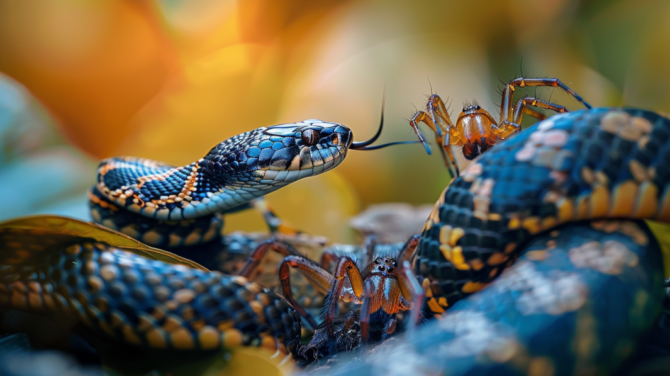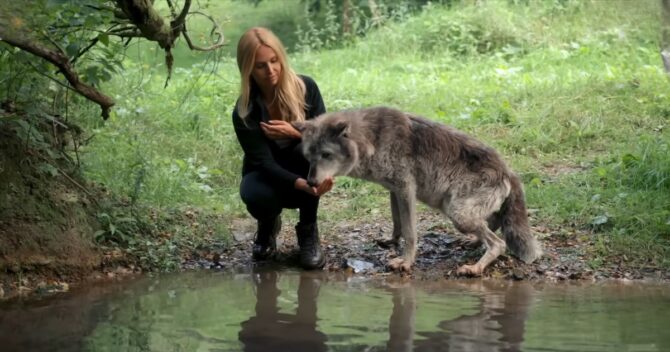Animals have existed since prehistoric times, and even with the extinction of several creatures, there are millions of them still around today.
However, not all of these animals are safe. While many are classified as least concerned by the IUCN, there are a lot of threatened animals recorded in the IUCN Red List.1
A growing number of species are declining and may become extinct if nothing is done.
This situation is brought about by human activities like hunting and deforestation.
The most endangered species include the ivory-billed woodpecker, Javan rhinoceros, Amur leopard, lemur, and black rhinoceros, among others.
Here is a list of the 15 world’s most threatened species. The last number is a sobering reminder of what we face.
The Most Endangered Animals in the World
1. Amur Leopard

- Scientific Name: Panthera pardus orientalis
- Range: Russia, China
- Habitat: Mountainous forests
- Conservation Status: Critically Endangered
The Amur leopard is a leopard subspecies found in Asia, specifically in the northern parts of China and southeastern Russia.
These creatures used to occur in the Korean regions, but they are considered locally extinct in these countries. The population in China and Russia isn’t faring better.
The Amur leopard is considered the rarest cat on earth.2 It is classified as critically endangered by the IUCN, with only about 110 individuals being reported in 2021.
This is an improvement from 2015, when there were only around 60.
Threats the Amur leopard face include deforestation, poaching, and habitat loss. Poaching is the biggest threat facing the Amur leopard.
2. African Forest Elephant

- Scientific Name: Loxodonta cyclotis
- Range: Africa
- Habitat: Humid forests
- Conservation Status: Critically Endangered
The African forest elephant is one out of three extant elephant species, the other two being the African bush elephant and the Asian elephant.
The African forest elephant lives in different West African and Central African countries. It inhabits humid forests.
None of the elephant species are faring well. The Asian and African bush elephants are classified as endangered.
The African forest elephant is suffering the most, however, with its status being critically endangered.
By 2013, there were only about 30,000 remaining. Together with the African bush elephant, there are over 400,000.
While this seems reassuring, the population decline speed makes it less so.
3. Ivory-billed Woodpecker
- Scientific Name: Campephilus principalis
- Range: United States, Cuba
- Habitat: Forests
- Conservation Status: Critically Endangered
The ivory-billed woodpecker is a native of the United States and Cuba, where it inhabits different forest types.
The population decline of this woodpecker is severe. While the IUCN still classifies the creature as critically endangered, the American Birding Association puts it as “definitely or probably extinct.”
At a point, it was considered extinct. This changed in 2004 when a population was sighted in Arkansas.
This hasn’t let them off the hook, as we can’t tell if the population will rise again. As of 2021, that seemed unlikely.3
This bird was affected mainly by hunting for their bills. Another possible threat was deforestation.
4. Eastern Lowland Gorilla
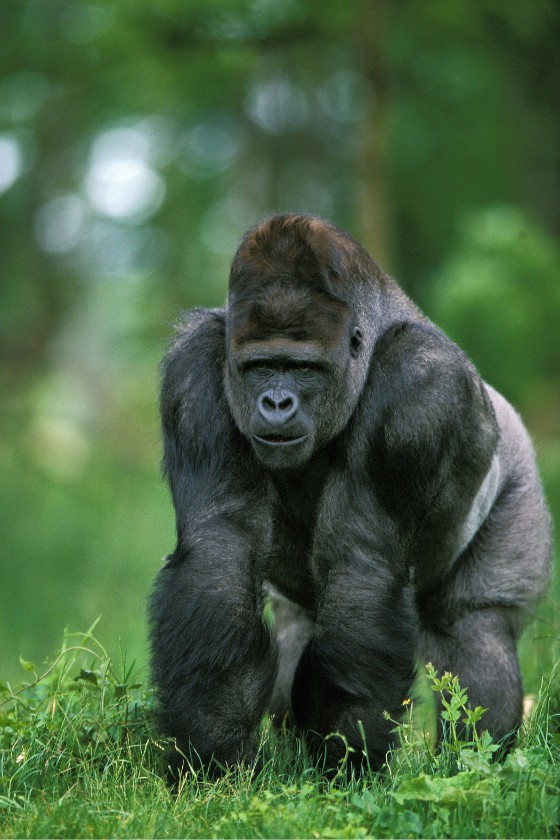
- Scientific Name: Gorilla beringei graueri
- Range: Democratic Republic of the Congo
- Habitat: Mountainous forests
- Conservation Status: Critically Endangered
The eastern lowland gorilla is a subspecies of the eastern gorilla found only in the Democratic Republic of Congo. It inhabits the mountainous areas of the country.
There are also individuals staying in parks and reserves. It is the largest eastern gorilla subspecies. Unfortunately, it may not be so for long.
The eastern lowland gorilla is classified as critically endangered by the IUCN.
When we compare its population to that of the western lowland gorilla (that’s also critically endangered), there’s cause for concern.
In 2016 there were over 100,000 western lowland gorillas but just around 3,800 eastern lowland gorillas.
The latter has since increased to around 6,800 in 2021, but it remains an issue.
Threats include poaching for their meat, mining, agriculture, and deforestation.
Civil unrest in the Democratic Republic of Congo also had a role to play in the reduction of the eastern lowland gorilla.4
5. Giant Ibis
- Scientific Name: Thaumatibis gigantea
- Range: Northern Cambodia
- Habitat: Marshes, swamps, lakes, rivers
- Conservation Status: Critically Endangered
The giant ibis is limited to Northern Cambodia, though there were some sightings in Vietnam and southern Laos.
It is the only species in the genus Thaumatibis, and unless something is done, this genus might vanish in some years.
The giant ibis is classified as critically endangered by the IUCN, and in Thailand, it is already extinct.
The estimated population is set at 500 individuals, which is progress from 2018, when it was at 200.
Some threats the giant ibis face is the cutting of forests, drainage of wetlands, and hunting. Warfare also impacted this breed.
6. Lemur
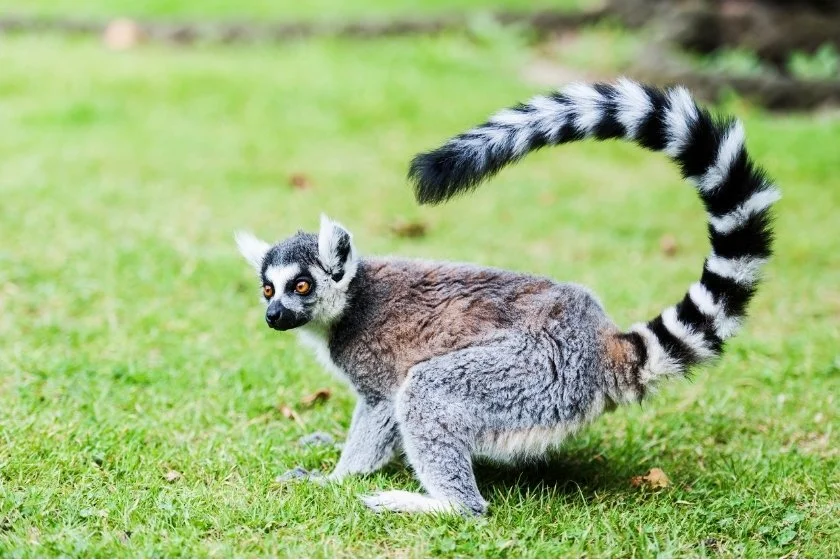
- Scientific Name: Lemuroidea
- Range: Madagascar
- Habitat: Marshland
- Conservation Status: Endangered
Is it possible for a family to be endangered? This is the case with the lemur.
These animals all belong to the wet-nosed superfamily Lemuroidea, and all species can be found only in Madagascar.
In varying degrees, each lemur species faces population decline. They are the most threatened of all mammals, and this is why you may not find this animal anywhere else except in Madagascar.
All these species may become extinct in the next few years without conservation.
Threats lemurs face include habitat loss and uncontrolled hunting.
7. Hawksbill Sea Turtle
- Scientific Name: Eretmochelys imbricata
- Range: Indian, Pacific, and Atlantic Oceans
- Habitat: Tropical reefs
- Conservation Status: Critically Endangered
The Hawksbill sea turtle has a worldwide distribution but is found only in the subtropical and tropical regions.
As a sea turtle, it occurs in the Indian, Pacific, and Atlantic oceans. Despite the global distribution, however, the Hawksbill sea turtle is in grave danger.
This turtle is classified as critically endangered by the IUCN, so much so that it is illegal to hunt this animal in many countries.
Besides hunting, the Hawksbill sea turtle also gets threatened by exploitation for their carapace shells.
8. Orangutan
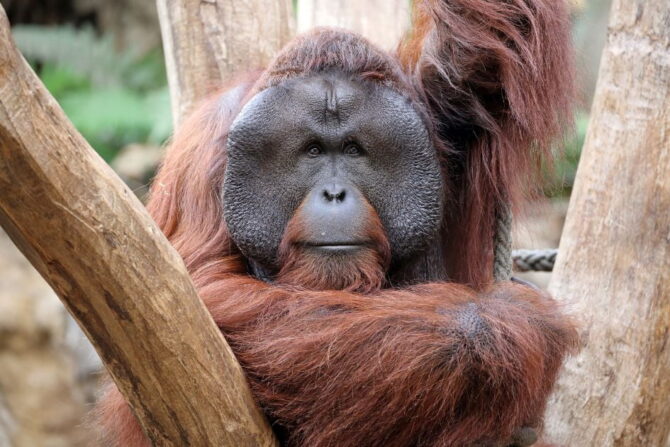
- Scientific Name: Pongo
- Range: Indonesia, Malaysia
- Habitat: Rainforests
- Conservation Status: Critically Endangered
The orangutan is the common name for the Pongo genus, and there are currently three species.
At first, all three species were considered one species. This changed when the first two species—the Bornean orangutan and the Sumatran orangutan—were identified.
The third orangutan came out in 2017, named the Tapanuli orangutan.
All three species are classified as critically endangered by the IUCN, despite their popularity amongst animal enthusiasts.
As of 2020, there were around 23,000 in existence. This is a decline compared to 1920, when the orangutan population was at 230,000.
The biggest threat facing the orangutan is deforestation. As arboreal mammals, the lack of trees spelled danger.
9. North Atlantic Right Whale
- Scientific Name: Eubaleana glacialis
- Range: Atlantic Ocean
- Habitat: Coastal waters
- Conservation Status: Critically Endangered
The North Atlantic right whale is one out of three right whale species, the other two being the North Pacific right whale and the Southern right whale.
These three were once considered the same species but have since been grouped under the Eubaleana genus instead.
The southern right whale is safe, but others tell a different story.
The North Atlantic right whale is classified as critically endangered, with only an estimated 370 individuals still in existence.
This is a problem as right whales help regulate ocean food chains.
The biggest threat these whales face is whaling. Because they are close to the coast and produce whale oil, they’re an easy target.
10. Vaquita
- Range: Mexico
- Habitat: shallow, warm waters
- Conservation Status: Critically Endangered
The vaquita lives in the Northern end of the Gulf of California in Mexico, the only place it can be found.
It is the smallest of all cetaceans, and it is at risk of completely disappearing from existence. It also has the smallest range among mammal species.
The vaquita is critically endangered, following the aforementioned species on our list.
As of 2019, there were only 19 individuals left, a far cry from 2007 when the population was at 151. Its major threat is bycatch.
11. Black Rhinoceros
- Scientific Name: Diceros bicornis
- Range: Africa
- Habitat: Scrublands, grasslands, savannas, Montane forests
- Conservation Status: Critically Endangered
The black rhinoceros is a native of Africa, specifically the eastern and western areas.
You’d find it in countries like Botswana, Angola, Malawi, Kenya, and Tanzania. Preferred habitats include scrublands, grasslands, and savannas.
The population decline of the black rhinoceros is one of the saddest on record. It used to be abundant in the 20th century, but that changed after 1960 when the number declined drastically to less than 2,500.
Efforts have stopped the black rhinoceros from going completely extinct, but it isn’t out of the flames yet. Some subspecies have already been declared extinct.5
The black rhinoceros is threatened by illegal poaching, habitat loss, and competing species.
12. Mountain Gorilla
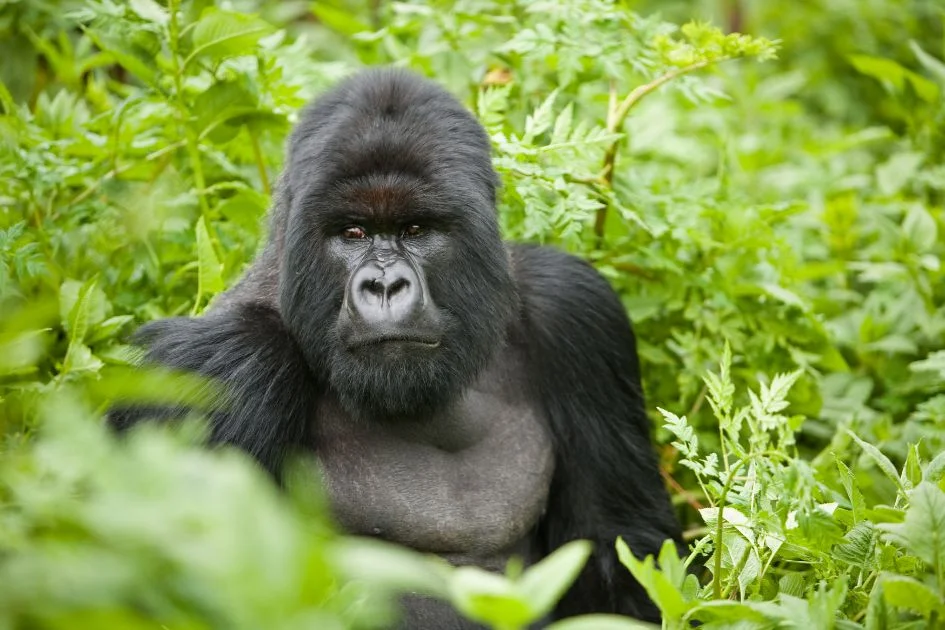
- Scientific Name: Gorilla beringei beringei
- Range: Africa
- Habitat: Parks, volcanic mountains
- Conservation Status: Endangered
The mountain gorilla is a subspecies of the eastern gorilla, the other being the eastern lowland gorilla (also on this list).
It lives both in Central/East Africa and in Uganda, inhabiting parks and a volcanic mountain.
This creature’s status is better than many others on the list, but it is classified as endangered by the IUCN. This remains a problem.
The population is estimated at more than 1,000 individuals. Threats include poaching and habitat loss.
13. Koala

- Scientific Name: Phascolarctos cinereus
- Range: Australia
- Habitat: Open forests, woodlands
- Conservation Status: Vulnerable
The koala is sometimes called a koala bear, but this is inaccurate as it doesn’t belong to the bear family.
Rather, it is a member of the Phascolarctidae family. It resides in the woodlands and open forests of Australia.
While the koala is classified as vulnerable by the IUCN, the Australian Capital Territory listed it as endangered in 2022.
Either way, the koala is threatened. Habitat loss and climate change are two reasons for population decline.
14. Irrawaddy Dolphin
- Scientific Name: Orcaella brevirostris
- Range: Asia
- Habitat: Brackish water
- Conservation Status: Endangered
The Irrawaddy dolphin is a native of Asia, specifically the southeast region. It lives more in brackish waters, which makes it an oceanic dolphin and not a river one.
This is true even though it can be called the Irrawaddy river dolphin.
The species is classified as endangered by the IUCN, with only about 7,000 left.
Because of its rarity, people in Cambodia treat it as sacred. Its major threat is illegal fishing.
15. Baiji

- Scientific Name: Lipotes vexillifier
- Range: China
- Habitat: Yangtze river
- Conservation Status: Critically Endangered (possibly extinct)
The baiji is also known as the Chinese river dolphin, the Han river dolphin, the whitefin dolphin, and the Yangtze dolphin. It is (or was) a native of China, specifically in the Yangtze river.
There has been no sighting of this dolphin for 40 years, leading to the possibility that it has gone extinct.
If the extinction is true, the baiji will be the first dolphin that goes extinct due to the actions of humans.
It was threatened by the industrialization of China and its impacts.
Final Thoughts
Fortunately, many groups are dedicated to preserving the world’s most endangered animals we featured on this list.
The efforts made have helped slow the decline of many species. However, when you consider the disappearance of the baiji, there’s a long road to go.
Together, we must take the near extinction of these species seriously and work together to protect our animals.
References & Notes
- IUCN Red List of Threatened Species.
- Amur leopard: the world’s rarest cat? WWF.
- Ivory-billed Woodpecker to Be Officially Declared Extinct in U.S. Audubon.
- Eastern Lowland Gorilla. WWF.
- How the Western Black Rhino Went Extinct. Scientific American Blog Network.



